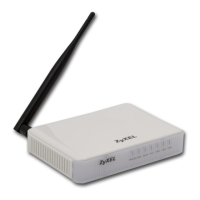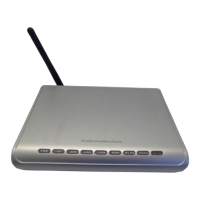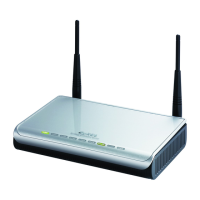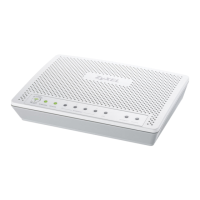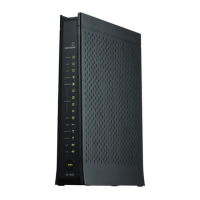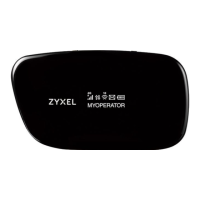
Do you have a question about the ZyXEL Communications PMG5317-T20A and is the answer not in the manual?
| Model | PMG5317-T20A |
|---|---|
| Device Type | Wireless Router |
| Frequency Bands | 2.4 GHz |
| Max Data Rate | 300 Mbps |
| Ethernet Ports | 4 |
| WAN Port | 1 |
| LAN Ports | 4 |
| Maximum Wireless Speed | 300 Mbps |
| Security | WPA, WPA2 |
| Antennas | 2 |
| Wireless Standards | IEEE 802.11b/g/n |
Provides an overview of the GPON device, how to manage it, good habits, and its applications.
Explains how to access and navigate the web-based management interface for the GPON Device.
Guides users through the initial setup of the GPON Device, including time zone, internet, and wireless settings.
Provides a step-by-step guide on configuring the GPON Internet connection using the Web Configurator.
Details how to set up a secure wireless network, including WPS and manual configuration.
Explains how to register a SIP account and make voice calls over the Internet.
Guides on setting up and accessing file sharing for USB devices connected to the GPON Device.
Explains how to configure static routing rules for network traffic forwarding.
Details how to configure Quality of Service (QoS) for traffic prioritization.
Explains how to use Dynamic DNS to access the GPON Device using a domain name.
Describes how to view network connection status and device information using the Network Map and Status screens.
Discusses Broadband screens for configuring GPON Device Internet access, including WAN IP address.
Covers setting up the GPON Device's wireless connection, including general settings and security.
Explains how to configure LAN settings, DHCP server, and manage IP addresses.
Details how to view and configure static route rules and DNS routes on the GPON Device.
Explains how to configure QoS to prioritize application traffic and fine-tune network performance.
Discusses configuring NAT for port forwarding, applications, port triggering, DMZ, and address mapping.
Guides on enabling and configuring Dynamic DNS settings for accessing the GPON Device via a domain name.
Explains how to create multiple networks by grouping LAN and WAN interfaces.
Covers enabling file sharing and media server features for USB devices connected to the GPON Device.
Details how to enable and configure firewall settings for network protection.
Explains how to permit or deny client access based on MAC addresses.
Describes how to block websites, define time periods, and filter content for user access.
Allows defining time periods and days for scheduled rules, such as firewall access control.
Covers generating certificate requests and importing trusted CA certificates for authentication.
Explains how to connect phones, make calls over the Internet, and configure voice settings.
Details how to view system and security logs, and configure log settings for alerts.
Provides screens to view network traffic statistics for WAN, LAN interfaces, and NAT.
Allows viewing VoIP registration, current call status, and phone numbers.
Provides a view of IP-to-MAC address mappings for devices on the network.
Displays routing information based on destination addresses to forward packets efficiently.
Allows naming the GPON Device and assigning an associated domain name for identification.
Enables viewing and configuring settings for admin and other user accounts logged into the GPON Device.
Configures which interfaces and services can access the GPON Device remotely.
Explains how to configure SNMP settings for network management and monitoring.
Covers system settings like system time, password, name, domain name, and inactivity timeout.
Configures the GPON Device to send logs, reports, or notifications via email.
Allows configuration of where logs are sent and which logs are recorded.
Explains how to upload new firmware to upgrade the GPON Device's performance.
Covers backing up, restoring device configurations, and resetting to factory defaults.
Provides tools like Ping, TraceRoute, and NsLookup to identify and diagnose network problems.
Allows changing the Subscriber Location ID (SLID) setting for identifying the device to the OLT.
Offers suggestions to solve potential problems related to power, access, internet, and wireless connectivity.
Provides contact information and required details for customer support.
Discusses wireless LAN topologies, configurations, security, and antenna characteristics.
Explains IPv6 addressing, prefixes, link-local addresses, and related protocols.
Lists commonly used services with their associated protocols and port numbers.
Contains copyright, disclaimer, regulatory notices, and safety warnings.
